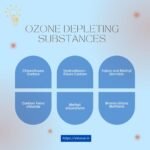Coral Reef | Coral Reef UPSC: A Complete Guide in 2024
Recent Context
Underwater mapping technology enables to construct 3D images of the ocean floor, facilitating the mapping of coral reefs at a depth of 200 metres to 1,000 metres where sunlight doesn’t penetrate.
More of ocean floor is covered by deep-sea reefs than by tropical reefs, which are found at 0-30 meters depth with light penetration.
Great Barrier Reef in Australia is the biggest tropical coral reef system in the world.
What are corals and Coral reefs?
Corals are marine invertebrates belonging to the phylum Cnidaria. They are small animals called polyps and typically they form compact colonies of very identical polyps. They have a soft body topped by a mouth with tentacles. To protect their soft bodies polyps secrete limestone these are called exoskeleton.
Individual colonies grow by asexual reproduction of polyps. They can also breed sexually by spawning. Coral species are reef builders and in the course of time the structure formed by them is called coral reef.
Most corals obtain their energy and nutrients from algae called zooxanthellae. Beautiful colours to corals are added by this algae.
In India, Coral reefs are found in Gulf of Kutch, Gulf of Mannar, Andaman & Nicobar, Lakshadweep Islands and Malvan (Maharashtra).
Difference between deep sea corals and shallow corals
| Shallow Water Corals | Deep Sea Corals |
| They are brown or green in appearance | They appear white |
| They have higher diversity of species | Less diversity of species. |
| They rely on zooxanthellae for food requirements. | Feed on small planktons or other available organic matter. |
| They require sunlight for growth | They do not require sunlight for growth. |
| They are highly affected by pollution, environment change and other threats. | Populations in the deeper reefs are less likely to be affected by environmental stressors and so are more protected from mortality events. |
| They have zooxanthellae. | Deep-sea corals do not have the same tiny algae cells (zooxanthellae) in their tissue that shallow-water and mesophotic corals contain. Deep-sea corals are therefore often referred to as “azooxanthellate” coral. |
| They do not cover much of ocean floor | They cover most portion of ocean floor |
| Major species here are sponges, crabs, etc | Habitat to Sharks, Swordfish, Octopus etc |
Coral Bleaching
Corals can survive in a limited range of conditions such as temperature, salinity, PH value, Biological oxygen Demand (BOD). When corals become stressed they expel zooxanthellae living in their tissues. Corals turn completely white which is known as Coral Bleaching. Even though corals can survive a bleaching event, they are further subjected to more stress and mortality.
Importance of Coral Reefs
- They occupy less than 0.1% of ocean area however provide home to at least 25% of marine species.
- They protect coastline from storms and erosion
- They are important source of food and medicine
- Local tourism in coastal areas is dependent upon coral reefs.
- It provides jobs for local community
- In net economic value, the world’s coral reef is estimated to be in 10s of billions of dollars per year.
- Offers opportunity for recreation
Threats to Coral reefs
- Disturbance from oil and gas drilling,
- Ocean acidification,
- Unsustainable fishing,
- Coral harvesting
- Coral bleaching
Initiatives to protect coral reefs.
International Initiatives:
A number of global initiatives are being taken to address the issues, like:
- International Coral Reef Initiative
- Global Coral Reef Monitoring Network (GCRMN)
- Global Coral Reef Alliance (GCRA)
- The Global Coral Reef R&D Accelerator Platform
National Level
Similarly, the Ministry of Environment and Forests and Climate Change(MoEF&CC), India has included the studies on coral reefs under the Coastal Zone Studies (CZS).
In India, the Zoological Survey of India (ZSI), with help from Gujarat’s forest department, is attempting a process to restore coral reefs using “biorock” or mineral accretion technology.
National Coastal Mission Programme to protect and sustain coral reefs in the country.
Read about the Schemes in news here.




Pingback: Ozone Depleting Substances: A Comprehensive Guide in 2024